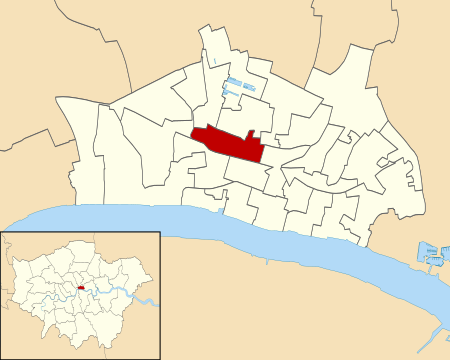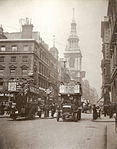Cheap (ward)

Cheap is a small ward in the City of London. It stretches west to east from King Edward Street, the border with Farringdon Within ward, to Old Jewry, which adjoins Walbrook; and north to south from Gresham Street, the border with Aldersgate and Bassishaw wards, to Cheapside, the boundary with Cordwainer and Bread Street wards. The name Cheap derives from the Old English word "chep" for "market".The following roads run north to south across the ward: St. Martin's Le Grand, Foster Lane, Gutter Lane, Wood Street, Milk Street, King Street, and Ironmonger Lane. Within its boundaries are two Anglican churches: St Vedast Foster Lane and St Lawrence Jewry; a third church, St Mildred, Poultry, was demolished in 1872. Several Livery Halls are located in Cheap, including those of the Mercers', Goldsmiths', Wax Chanders' and Saddlers' Companies. A small part of the Guildhall lies within the ward's boundaries: the main entrance and main hall itself; the remainder is in Bassishaw. Also within Cheap are the Lord Mayor's and City of London Court and the southern end of Basinghall Street.
Excerpt from the Wikipedia article Cheap (ward) (License: CC BY-SA 3.0, Authors, Images).Cheap (ward)
Wood Street, City of London
Geographical coordinates (GPS) Address Nearby Places Show on map
Geographical coordinates (GPS)
| Latitude | Longitude |
|---|---|
| N 51.5148 ° | E -0.094 ° |
Address
Wood Street 1
EC2V 7WS City of London
England, United Kingdom
Open on Google Maps











